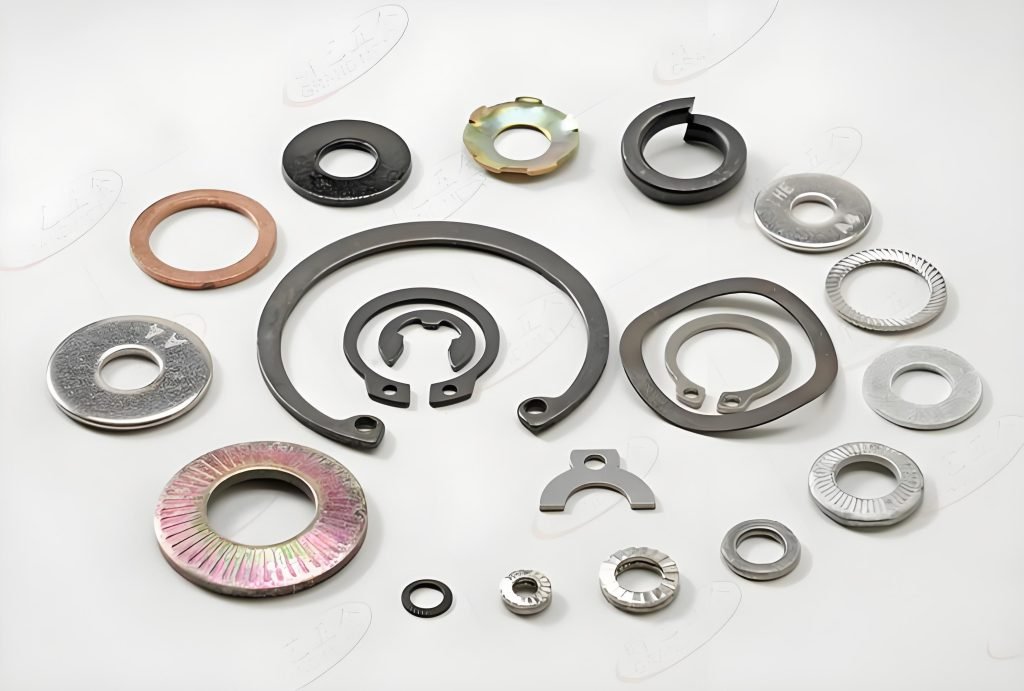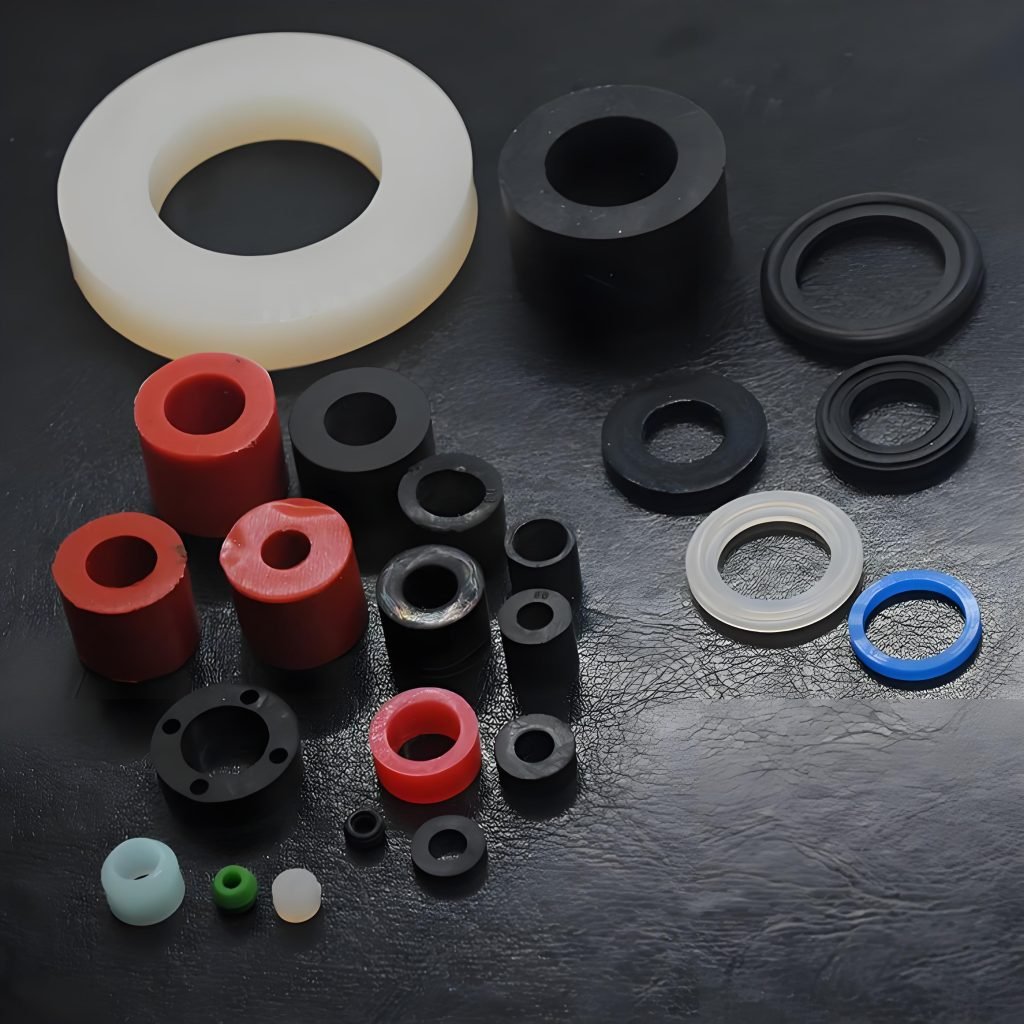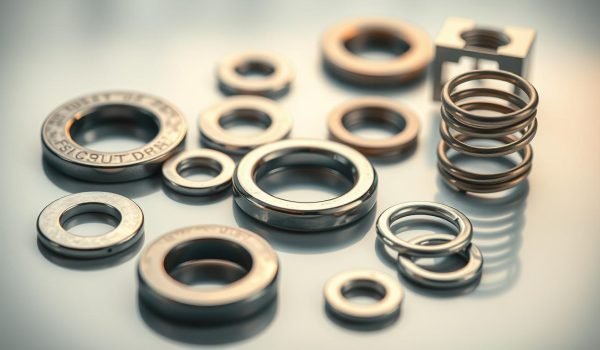Did you know that a simple washer can significantly impact the longevity and performance of your fastening projects? A washer is a small, flat piece of material used with fasteners like bolts or screws to distribute the load and protect the surface being fastened.
Using a washer can prevent loosening or damage, ensuring your projects remain secure and durable. Whether you’re a DIY enthusiast or a professional contractor, understanding the different types of washers and their applications is crucial for making informed decisions.
By exploring the primary functions and benefits of washers, you’ll discover how these simple devices enhance the performance of bolts, screws, and other fasteners in various applications.
Understanding Washers: Purpose and Functions
You might not always notice them, but washers are essential in many applications, from construction to electronics. Washers are simple yet crucial components that enhance the effectiveness and durability of fastener systems.
What is a washer?
A washer is a thin plate or ring used to distribute the load of a fastener, provide a smooth bearing surface, and prevent damage to surfaces. Typically made from metal, plastic, or rubber, washers come in various shapes, sizes, and materials to suit different applications.

Key Functions of Washers
Washers serve several key functions in fastening systems. They help distribute the clamping force of a fastener over a larger area, reducing pressure on the fastener surface. This load distribution prevents damage to the material being fastened. Additionally, washers provide a smooth bearing surface between the fastener head and the material, reducing friction and preventing the fastener from digging into softer materials.
Washers also play a crucial role in preventing fasteners from loosening due to vibrations, temperature changes, or structural movement. In electrical applications, certain types of washers provide insulation to prevent electrical conductivity between components. Some specialized washers create a seal to prevent leakage in plumbing, automotive, and other fluid-handling systems. Furthermore, washers can act as spacers to maintain precise distances between components or to align parts correctly during assembly.
Common Types of Washers
To ensure secure and reliable fastening, it’s essential to know about the various types of washers available. Washers are not just simple flat discs; they come in a variety of shapes, sizes, and materials, each designed to serve specific purposes in different applications.
Plain Washers
Plain washers, also known as flat washers, are used to distribute the load of a bolt or screw across a wider area. This helps prevent damage to the surface being fastened and can also act as a spacer. They are commonly used in construction, machinery, and other applications where a smooth, flat surface is required.
Spring Washers
Spring washers are designed to provide a spring-like action, maintaining tension between the fastener and the surface it’s attached to. This helps prevent loosening due to vibration or thermal expansion. Spring washers are often used in applications where there’s a risk of the fastener coming loose over time.
Lock Washers
Lock washers are used to prevent fasteners from loosening under vibration or other forces. They work by creating a locking action between the fastener and the surface, ensuring that the fastener remains securely in place. Lock washers are commonly used in automotive, aerospace, and other critical applications.
Specialized Washers
Specialized washers are designed for specific applications that require unique features beyond what standard washers provide. Examples include shoulder washers used in electrical applications for insulation, fender washers for distributing load over soft or brittle materials, and sealing washers that incorporate rubber or neoprene elements to create watertight seals.
Detailed Look at Plain Washers
When it comes to securing bolts and screws effectively, plain washers play a crucial role in various applications. These washers come in different shapes and sizes, each designed to serve specific purposes. Understanding the types of plain washers can help you choose the right one for your project.
Flat Washers
Flat washers are the most common type of washer, characterized by their flat, circular shape. They are used to distribute the load of a bolt or screw, preventing damage to the surface.
Fender Washers
Fender washers are larger than standard flat washers, providing a wider surface area to distribute the load. They are often used in applications where a larger bearing surface is required, such as in roofing and cladding.
Countersunk Washers
Countersunk washers have a countersunk hole, allowing the screw or bolt head to sit flush with the surface. They are ideal for applications where a smooth finish is required.
Square Washers
Square washers feature a square outer shape and are used in heavy-duty applications, such as structural steel connections and timber framing. They provide enhanced strength and stability due to their larger surface area and resistance to turning.
Square washers are particularly useful in structural connections, especially with timber or steel beams, where preventing rotation is crucial. Their square shape provides greater resistance to turning or embedding in softer materials, making them ideal for construction and heavy-duty applications.
Spring and Lock Washers Explained
To ensure the stability and longevity of your projects, understanding the different types of spring and lock washers is vital. These components are crucial in various mechanical assemblies, providing the necessary grip to keep fasteners in place.
Belleville Washers
Belleville washers, also known as conical or disc spring washers, are designed to provide a high level of spring force in a compact space. They are particularly useful in applications where a strong preload is required, such as in bolted joints.
Wave Spring Washers
Wave spring washers are another type of spring washer that provides a flexible, compact solution for applying a preload. They are often used in applications where space is limited, and their flexibility helps to absorb vibrations.
Split Lock Washers
Split lock washers, also known as split washers, are designed with a split in one area, allowing them to be compressed and then expand, creating a locking action on the fastener. They are typically made from hardened steel to ensure durability.
Tooth Lock Washers
Tooth lock washers feature sharp teeth or serrations that dig into the mating surfaces, preventing fasteners from loosening due to vibration or rotation. There are two main varieties: internal tooth lock washers, which grip the fastener head or nut, and external tooth lock washers, which bite into the mating surface. These lock washers are particularly effective in electrical applications and machinery.
By understanding the different types of spring and lock washers, you can choose the right washer for your specific needs, ensuring the integrity and longevity of your projects.
Materials Used in Washer Manufacturing
The manufacturing of washers involves a diverse range of materials, each selected for its unique properties and applications. The choice of material is critical as it determines the washer’s performance, durability, and suitability for specific tasks.

Metal Washers
Metal washers are widely used due to their strength, durability, and resistance to wear and tear. They are typically made from materials like steel, stainless steel, and aluminum. Steel washers are common in construction and machinery, offering high strength and resistance to deformation. Stainless steel washers are preferred in corrosive environments, while aluminum washers are used where weight reduction is necessary.
Plastic and Nylon Washers
Plastic and nylon washers are used in applications where metal washers might be too harsh or where electrical insulation is required. They are lightweight, corrosion-resistant, and can be used in a variety of temperatures. Nylon washers, in particular, offer good wear resistance and are often used in textile and food processing machinery.
Rubber and Composite Washers
Rubber and composite washers serve specialized functions, particularly in applications requiring sealing, vibration dampening, or electrical insulation. Rubber washers, made from materials like neoprene, EPDM, and silicone, are used in plumbing to create watertight seals. Composite washers, which combine materials like metal and rubber, offer unique properties such as strength with sealing capabilities. They are used in various industries, including automotive and aerospace, for their versatility and performance.
How to Choose the Right Washer for Your Project
To ensure your project’s integrity, it’s essential to choose a washer that meets its specific needs. Selecting the right washer involves considering several key factors that impact the performance and durability of your project.
Considering the Application
When choosing a washer, the first thing to consider is the application. Different projects have different requirements. For instance, applications involving sheet metal or other thin materials require washers with a larger outer diameter to distribute the load and prevent material deformation. Understanding the specific demands of your project is crucial.
Material Selection Factors
The material of the washer is another critical factor. The washer’s material should be compatible with the materials used in your project to prevent corrosion and ensure durability. For example, in aerospace applications, specific materials and standards must be adhered to, making material selection particularly important.
Size and Dimension Guidelines
Ensuring the washer’s dimensions match the fastener size and application requirements is vital. The inner diameter should be slightly larger than the fastener diameter, typically 0.5-1mm larger, to allow for easy installation. The outer diameter should provide adequate load distribution, and the thickness should be appropriate for the load it will bear. For applications with screws, the washer’s outer diameter should be larger than the screw head.
Conclusion
After exploring the various types of washers, it’s evident that each serves a unique purpose in ensuring the security and durability of your projects. You’ve learned how different types of washers, from plain washers that distribute the load to specialized washers designed for specific applications, play a crucial role in fastening.
When working on projects, from simple home repairs to complex industrial machinery, choosing the appropriate types of washers will help ensure your project’s success and durability. By considering factors like load distribution, vibration resistance, and material compatibility, you can make informed decisions about the types of washers best suited for your specific fastening needs.




